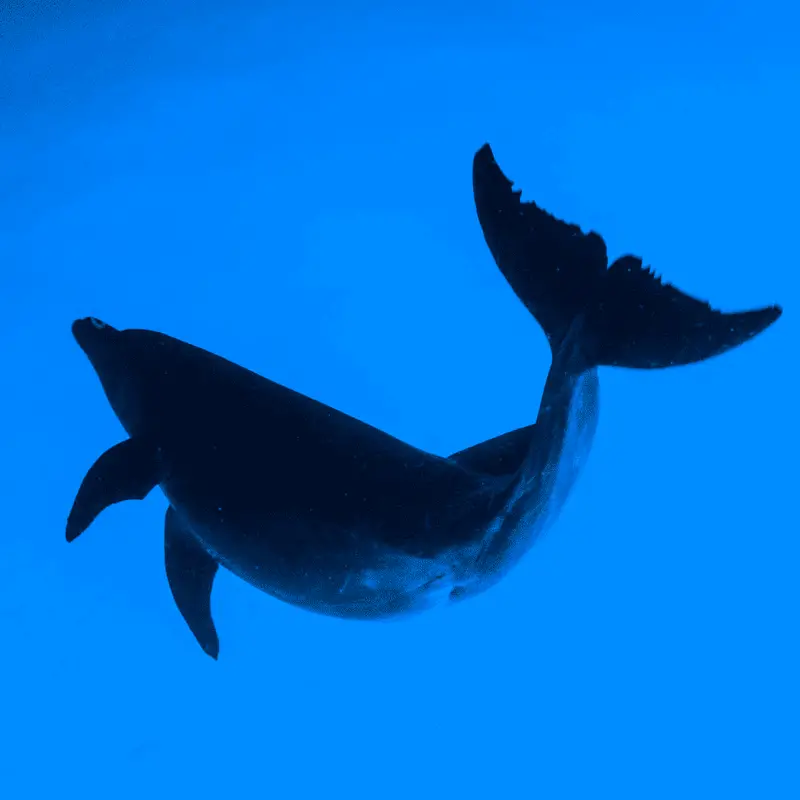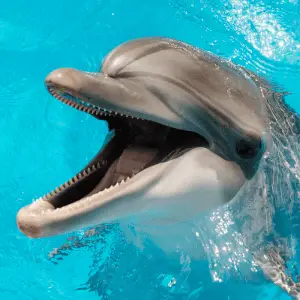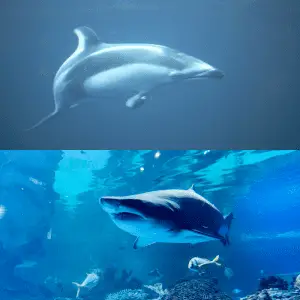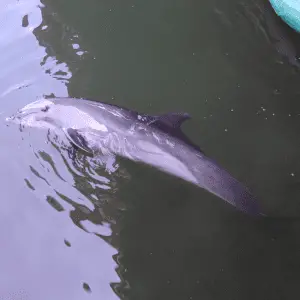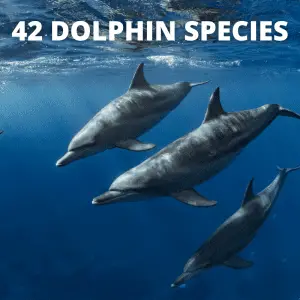Yes, they do. Female dolphins have nipples tucked up inside two folds of skin called mammary slits. This structure opens, and the nipples come out when it is required. Whenever the dolphin calves are ready to feed, they nudge on the mammary slits of their mother to alert her they need feeding.
There is no doubt that mammals have evolved in different and unique ways. Their incredible evolution has helped them survive in their specific environment for centuries. Dolphins are surrounded by water, and nursing their babies in such a situation is not as easy compared to land mammals.
Location
Dolphins come with two mammary slits on the underside of their belly. These slits come with an inverted nipple tucked inside. The nipples of dolphins are not the same as terrestrial mammals.
For example, terrestrial mammals come with protruding nipples, making it easier for their babies to feed on them. Compared to that, dolphin babies can’t feed whenever they want. It’s up to the mother when they get to feed.
How do the dolphins nurse underwater?
Whenever a dolphin baby is ready to feed, it dives underneath its mother and pokes on the mammary slit. The mother takes this poking as a signal that the baby is hungry. This poking also works as a stimulus that leads to the release of the nipples.
There is another huge difference between land mammals and dolphins. While the babies of the land mammals generally regulate the amount of milk they drink from their mother, the dolphin babies cannot do that. They do not control how much milk they can drink from their mother. Instead, the mother dolphin controls the amount of milk the baby can swallow.
The dolphin babies wrap their mouths around the nipple and create a u-shaped tube using their tongues. This tube-like structure makes sure that not a single drop of milk gets lost into the water.
The mammary glands of the dolphins come with muscles that can contract on the command of these animals. It helps the milk get squirted directly into the mouth of their babies.
The consistency of the milk is another factor that makes it easier for the dolphins to breastfeed underwater. The high-fat content of the dolphin milk makes it easier for the mothers to eject the liquid directly into their babies’ mouths. The thickness of the milk also helps the milk not get dissolved into the water around the babies’ lips.
Do the dolphins produce milk?
Yes, dolphins produce milk like any other mammals to feed their babies. The dolphin’s milk is very high in fat and thick consistency.
Feeding
Across all the different species of dolphins, the babies require a significant amount of milk to stay healthy and grow faster. Generally, a baby dolphin can drink milk after every 20 minutes throughout the day. As the babies get older, the frequency of drinking milk gets lesser. Dolphin mothers can nurse their babies until about three years of age.
The Dolphin babies are entirely dependent on their mothers’ milk to survive and grow, so they need to breastfeed frequently. Dolphin babies tend to stay with their mothers till they are three years of age.
Dolphin babies tend to grow faster in their first year of life. The growth is down to the high-fat content of the milk. Dolphin babies can grow seven times larger in their first year.
The Dolphin mother only gives birth to another baby once the previous baby has weaned off completely. That is one of the reasons why dolphins do not reproduce as often. It also enhances their chances of survival significantly if they are not competing for breast milk.
Importance of Dolphin Milk
Like all other mammal animals, milk plays an essential role in the lives of dolphin babies. The baby dolphins required their mothers’ milk for growth. Without their mothers’ milk, the baby dolphins will starve to death. A newborn baby dolphin consumes a large amount of milk every day, which becomes its sole food source. The nutrient-rich milk helps the baby’s to thrive and to grow faster. Dolphin milk is packed with healthy fats that help the dolphin babies develop essential body fat known as blubber, which allows them to stay afloat in the water. The milk also boosts the immunity system of the baby dolphins and ensures proper brain function. It also helps them in bone development.
Importance of Bonding
The breastfeeding process also helps to create an unbreakable bond between the mother and the baby dolphin. The survival of the baby must develop this strong bond with their mother. That is why the survival rate of dolphins in captivity is lower than their counterparts living in the wild. One of the primary reasons for this is that Dolphin mothers cannot nurture and nurse their babies as naturally as they could in the wild in captivity.
Do dolphins have breasts?
Dolphins don’t have breasts as people do, but they have nipples and mammary glands. Mammals don’t always have breasts.
Dolphin Nipples
Even though the feeding system is the same for all the dolphin species, the nipples are not the same size. The nipples of the dolphins stay inside a particular skin structure known as the mammary slit. This structure opens, and the nipples come out when it is required. The mother dolphin only releases milk when their babies have entirely covered the nipple with their tongue and mouth. This unique behaviour helps to protect the milk from any leaks. It also protects the mother from cold germs and bacteria.

